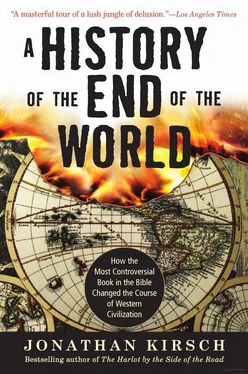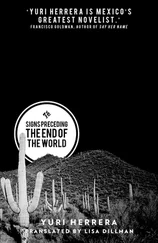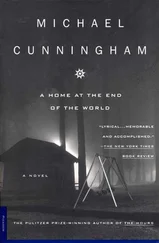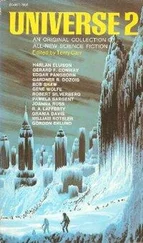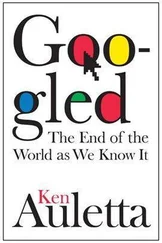“The hands that touch the body and blood of Christ must not have touched the genitals of a whore,” stormed one preacher in 1059, referring not to prostitutes but to the consecrated wives of the clergy. 7
But the call for chastity was not purely a spiritual concern; it also served the material and political interests of the church. A bishop with a wife and children, for example, might be inclined to regard the lands, buildings, and treasures of his bishopric as property to be passed down to his sons. Clearly, the wealth and power of the church were at risk unless the clergy were deprived of the temptation and opportunity to sire potential heirs. Such concerns were on the mind of Pope Gregory VII (1020–1085) when he complained of clerical marriage as a “foul plague of carnal contagion” that “[loosened] the reins of lust.” 8
Then, too, the call for the criminalization of clerical marriage owed something to the fear and loathing of women that is writ large in the book of Revelation. Thus, for example, Peter Damian, a white-hot church reformer of the eleventh century, addresses the consecrated wives of married priests as “appetizing flesh of the devil, that castaway from Paradise” and condemns them en masse as “poison of minds, death of souls, companions of the very stuff of sin, the cause of our ruin.” 9Indeed, he saw all women as sisters of the Great Whore of Babylon, and he was provoked into rhetorical excesses quite as hateful as the worst passages of Revelation.
“I exhort you, women of the ancient enemy, you bitches, sows, screech-owls, night-owls, blood-suckers, she-wolves,” rails Peter. “Come now, hear me, harlots, prostitutes, with your lascivious kisses, you wallowing places for fat pigs, couches for unclean spirits.” 10
Another besetting sin of the medieval church was the practice of simony—that is, the buying and bartering of church offices for profit among the royalty, aristocracy, and gentry as well as the high clergy. Politics were at work here, too; popes were jealous of their power to make and break bishops and cardinals and resented the monarchs who tried to take it away. After all, a bishop who owed his rank and title to a king was less likely to side with a pope in the struggle between church and state that was a commonplace of the late Middle Ages. But it is also true that those who profited from their clerical offices were often tempted to spend their riches on lives of opulence and sensuality. Simony reached all the way to the papacy; Pope Gregory VI (d. 1048), for example, is said to have purchased his seat on the papal throne from the previous pope, Benedict IX, at the stated price of two thousand silver pounds.
Such human flaws and failings among the clergy, high and low, sparked the so-called Gregorian reform, a wide-ranging set of innovations and improvements that reached a critical mass during the reign of Pope Gregory VII. The book of Revelation provided Pope Gregory with the language arsenal to justify his decrees: “For the nearer the time of Antichrist approaches,” he declared, “the harder he fights to crush out the Christian faith.” 11And the same impulse toward the purification of Christianity—“a longing for an ideal gospel life built on the imitation of the life lived by Jesus and his followers” 12—moved Francis of Assisi (1181/82–1226) to found the monastic order that inspired medieval Christians to ask themselves: “What would Jesus do?”
Here was yet another culture war in which the book of Revelation served as a rhetorical weapons dump. While kings and popes contested with each other for worldly power, monks and priests like Francis of Assisi, known as the Poverello (“Poor little man”), aspired to simplify and purify Christianity by stripping the church of its corrupting wealth and splendor. Both factions, as we shall see, resorted to the book of Revelation to justify their respective visions of the right way to live as a Christian in the world as we find it rather than the world to come. Indeed, it was the sorry state of the church—rather than war, famine, plague, and the other classic signs of the end of the world—that prompted a revolution in the reading of Revelation.
The maker of the apocalyptic revolution in medieval Europe was a visionary monk called Joachim of Fiore (ca. 1135–ca. 1202). Joachim was raised and educated to serve as an official in the royal court of the Norman king in southern Italy, but he was drawn to the life of “a wandering holy man,” the same calling that sent John to the seven churches of Asia Minor. Joachim took monastic vows and later founded a monastery in the rugged reaches of the Calabrian countryside, where he was inspired to undertake a study of the scriptures in an effort to crack the divine secrets that were hidden away in Holy Writ. 13
When Joachim started to read the book of Revelation, he hoped to find “the key of things past, the knowledge of things to come,” as he puts it, “the opening of what is sealed, the uncovering of what is hidden.” 14But he reached only the tenth verse of the text before the mysteries of Revelation stopped him like “the stone that closed the tomb.” 15Like so many other visionaries, Joachim sought a revelation of his own—and received one. After a year of prayerful longing and meditation, as Joachim himself describes it, the epiphany took place on Easter morning around the year 1184. Not unlike the experience described by Robert Graves eight centuries later, the baffling text miraculously snapped into focus for the medieval monk.
“About the middle of the night’s silence, as I think, the hour when it is thought that our Lion of the tribe of Judah rose from the dead, while I was meditating,” recalls Joachim, referring to Jesus Christ with the same code words that John uses in Revelation, “I suddenly perceived in my mind’s eye something of the fullness of this book and of the entire harmony of the Old and New Testaments.” 16
Once he had been given what he called “the gift of understanding,” Joachim extracted all kinds of new and unsuspected meanings from the book of Revelation. 17He was convinced, for example, that human history is divided into three ages, each one corresponding to a “person” of the Trinity—the Father, the Son, and the Spirit. The first age lasted until the crucifixion of Jesus, the second age was in progress during Joachim’s lifetime and would end with the arrival of the Antichrist, and the third age—an age of spiritual peace and perfection—would begin only after the Antichrist is defeated. And, echoing the words of Jesus himself, Joachim expressed his conviction that the final battle between God and Satan was at hand.
“This will not take place in the days of your grandchildren or in the old age of your children,” warns Joachim, “but in your own days, few and evil.” 18
Joachim’s single most revolutionary innovation was his refusal to confine Revelation to the spiritual realm, thus breaking with the approved reading of the text that dated all the way back to Augustine. Rather, he saw even the strangest visions in Revelation as prophecies of specific people and events in the real world. The seven heads of the satanic red dragon, for example, are understood by Joachim to signify the seven persecutors of the church across the centuries of human history, including Herod, Nero, and Saladin, the celebrated Muslim warrior who took Jerusalem back from the crusaders in 1187. The seventh head, he insisted, was the Antichrist yet (but soon) to come.
Yet Joachim’s vision of the end-times can be seen as a bright and cheerful one precisely because he saw the millennial kingdom as the reign of a reformed Christian church right here on earth. “His glorious new era was to occur within history and was therefore more utopia than Millennium,” explains British journalist and historian Damian Thompson. “This has led to Joachim being blamed for every failed utopian experiment from Savonarola’s Florence to Soviet Communism.” Joachim, however, regarded himself as a reformer rather than a revolutionary, and his conception of the New Jerusalem was “an exclusively Catholic vision.” 19
Читать дальше
